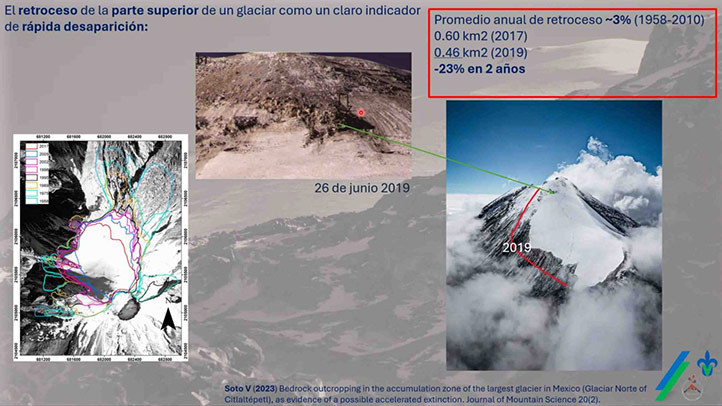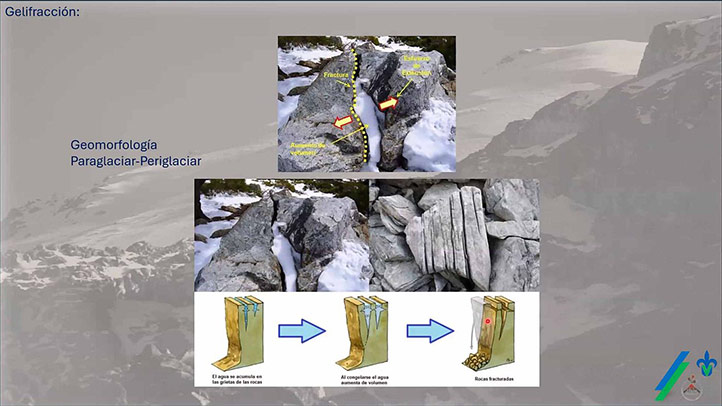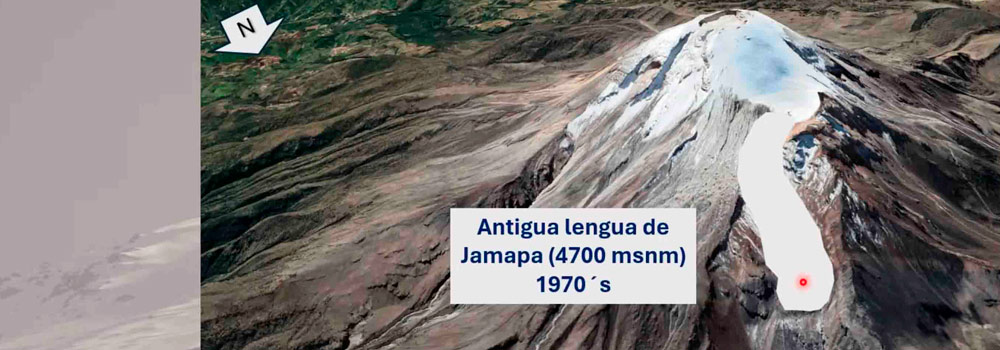- Huge rockslides pose a danger to residents and adventure tourism
- Jamapa Tongue, a massive mass of ice, has completely disappeared

The Pico de Orizaba region has lost 23% of its glaciers in the past three years
Jorge Vasquez Pacheco
Photos: Luis Fernando Fernandez
04/12/2024, Xalapa, Release- Victor Soto, Master of Environmental Science from the University of Veracruzana (UV) and PhD in Geography from the National Autonomous University of Mexico (UNAM), expressed that the increasing dynamics of the slopes pose a risk to the population and adventure tourism in Pico Orizaba. In addition to the effects of thermal fluctuation and retreat of glaciers.
In his conference “What happens after the retreat of the Pico de Orizaba glaciers?” Future scenarios of the dynamics of its slopes, coordinated by the Center for Ultraviolet Earth Sciences, indicated that this situation “stimulates not only the disappearance of the ice mass, but also fatigue on basalt rocks, which have low resistance to these masses.” Processes and releases car-sized rocks.

Victor Soto, PhD in Geography from UNAM and MSc in Environmental Science from UV
Effects of a steep climate curve
“Current glacier conditions in Mexico show greater vulnerability to climate patterns,” Victor Soto said, adding that Pico de Orizaba, like Popocatepetl, has recorded an average retreat of its glacier of 3% per year. When its depth was about 23 meters in 2019.
He expressed his regret that this loss has accelerated in recent years; To do this, he showed diagrams from 2011 that actually indicate the vast rock basement.
“When there is more or less accumulation and transformation from solid to vapor without going through the liquid phase, we talk about an imbalance due to three factors: a lack of precipitation, an air temperature above zero or an excess of surface energy. This is what happens in pico de Orizaba: “It showed a rate of decline due to the increase in temperature in the surrounding area.”
Basalt of volcanic origin records high heat absorption and stores energy and transfers it to the ice that melts due to this energy radiation. This affects the retreat or disappearance of a glacier, which subsequently generates enormous instability due to day and night fluctuations with a difference of up to 20 degrees.

Converting water into ice is able to break down rocks of volcanic origin
How are volcanic rocks affected?
Heat expands objects during positive temperature, rocks of volcanic origin – brittle and little elastic – expand and reach their peak and this reversal due to lower temperature translates into loss of their properties and small cracks. By retaining water that freezes, it is exposed to hydrostatic pressure and cracks.
The records showed the clear curves in the lines of thermal fluctuation within only 60 minutes and their decline in that short period. Jamapa Language said that in the early 1970s it broke off from the body of the glacier, and today it has completely disappeared and traces of the dynamics of the slopes can be seen in its place, with huge detachments of blocks of rock that are no longer able to remain attached to the slopes.
Consequently, large rock masses recede, lose volume and are deposited down the slope. whats the result? That the mountain loses its height. Ultimately, the geomorphological hazard is a reality for tens of thousands of residents, climbers and tourists.

Jamapa language, part of the glacier that has now completely disappeared
Categories: Science, Academic Plant, Major, Sustainability

“Social media evangelist. Student. Reader. Troublemaker. Typical introvert.”

:quality(85)/cloudfront-us-east-1.images.arcpublishing.com/infobae/TEQF6EONZRFGLLLDIDD4L2O4EE.jpg)

:quality(75)/cloudfront-us-east-1.images.arcpublishing.com/elcomercio/XU32LRAEZFDDPNVHLFU3CKVBYY.jpg)



More Stories
Venezuela ranks fourth in female leadership in science and technology in Latin America
In Portuguesa and Sucre they explore the wonderful world of science
The university court overturns the expulsion of two teachers and a chemical sciences student